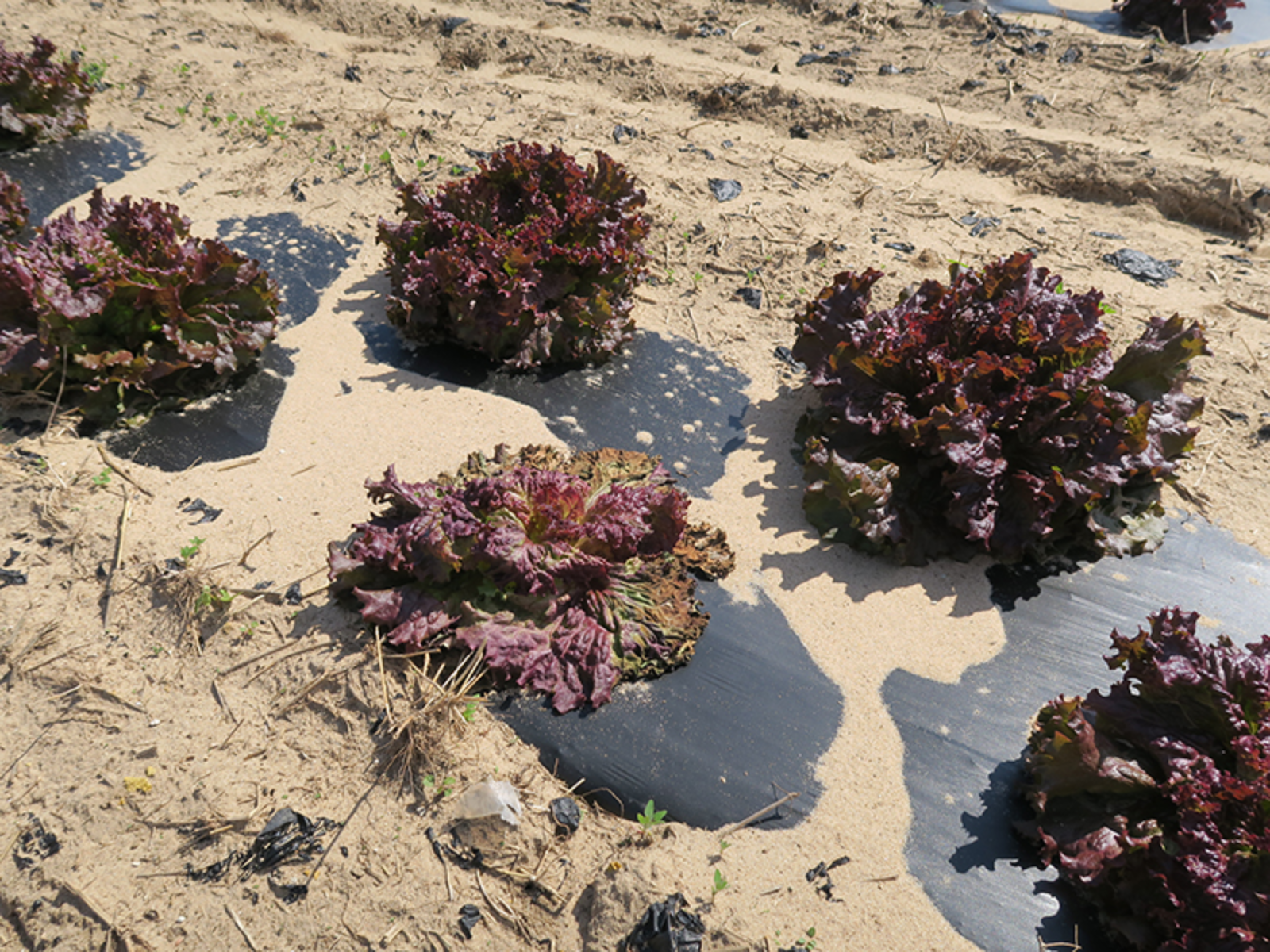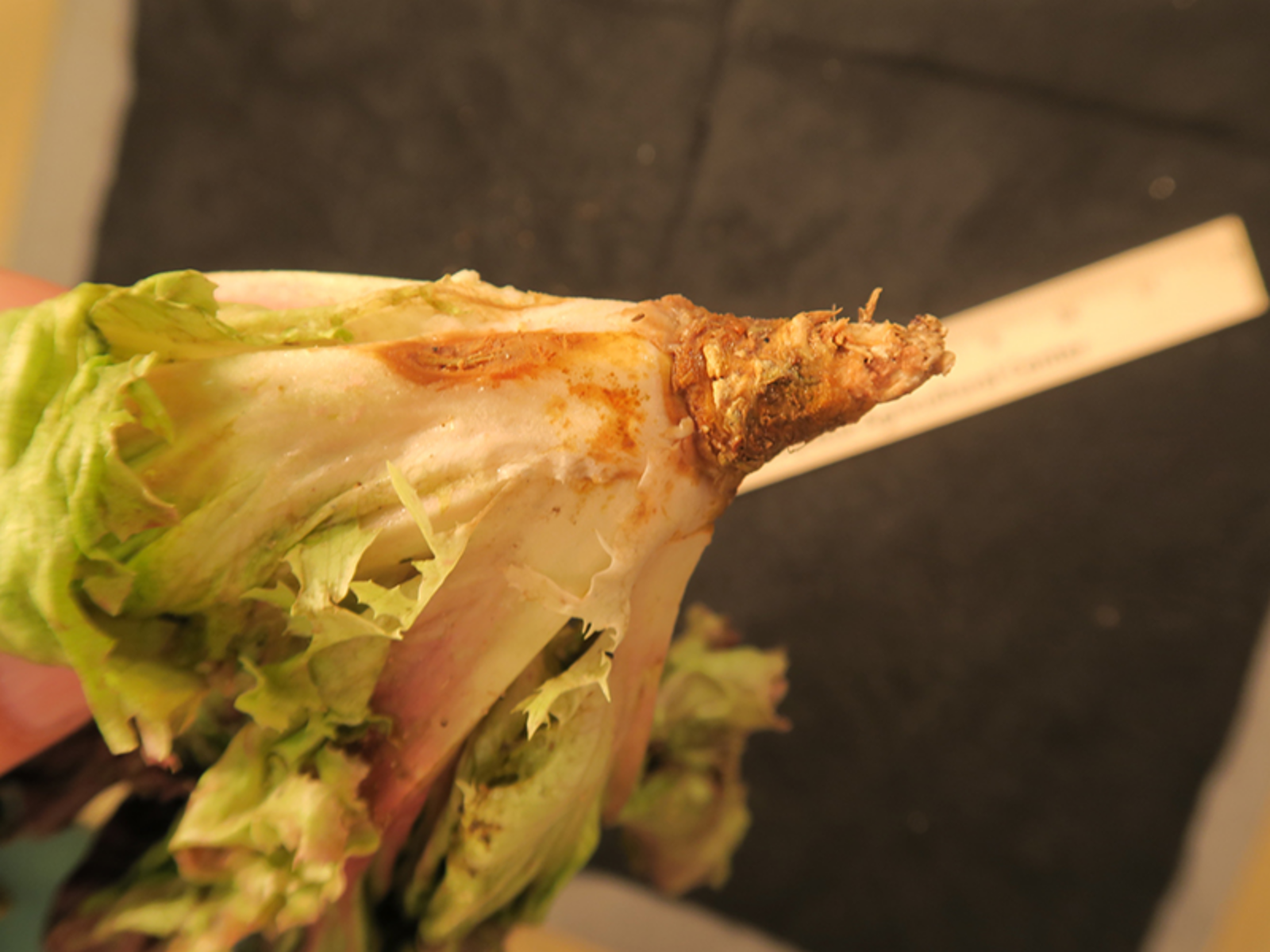Picture of the Week
May 23, 2022
Lettuce Drop
Dan Egel, Clinical Engagement Associate Professor-SWPAC, Botany and Plant Pathology, Purdue University
Although Indiana is not known for lettuce production, an increasing number of growers find that augmenting retail sales with leaf lettuce can be profitable. Homeowners may enjoy eating lettuce fresh out of the backyard. Since lettuce is a cool season crop, field planted leaf lettuce around Indiana may be reaching harvest stage. Generally, lettuce can be grown without problems, however recently I observed lettuce drop in an Indiana field.
Lettuce affected with lettuce drop often first appears stunted. A closer inspection may reveal that outer leaves are wilted and necrotic (Figure 1). Eventually, the entire plant may die. If the plant is removed from the ground and observed, the leaf ribs that touch the ground may exhibit dark, rotten appearing lesions (Figure 2). The lesions may be associated with dark fungal bodies known as sclerotia (Figure 3). Fortunately, lettuce drop does not often spread from plant to plant. The plants that are diseased will most likely die without spreading the disease to other plants. This fact limits the seriousness of the disease.
Click image to enlarge
There are several cultural methods that can help to reduce the damage caused by this disease. Deep plowing of residue buries the fungus that causes bottom rot. Anything that increases drainage, such as raised beds, should also reduce disease severity. Although no varieties of lettuce are resistant to lettuce drop, growers may notice that varieties vary in resistance. Unfortunately, the fungus that causes lettuce drop (Sclerotinia sclerotiorum) affects many different hosts. However, crop rotation with grain crops such as wheat may help to reduce disease occurrence. Finally, although most growers do not find the disease severity sufficient to require fungicides, several are listed in the Midwest Vegetable Production Guide for Commercial Growers.





